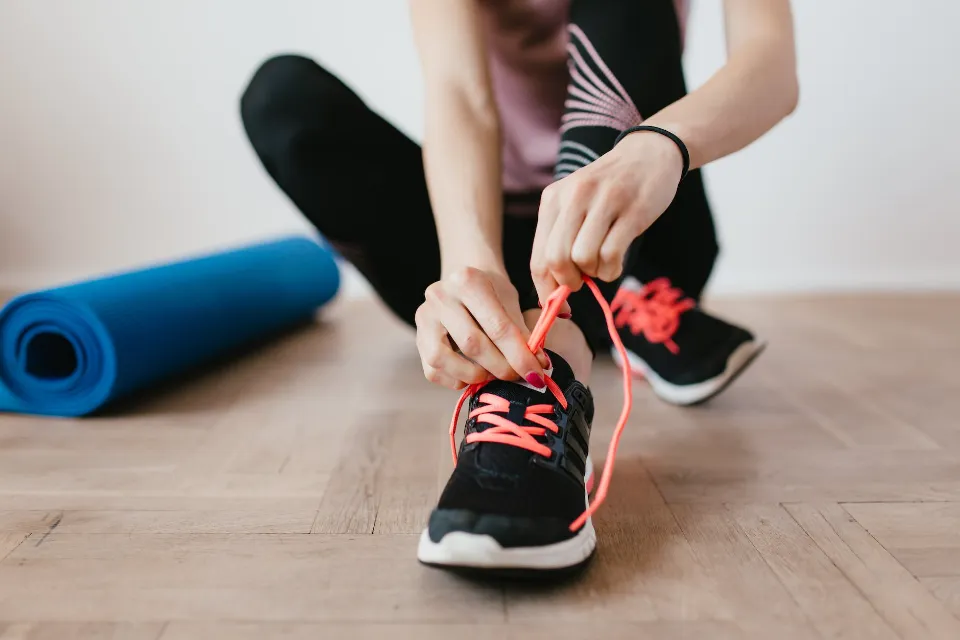
The most important consideration when choosing footwear should be how it makes you feel because, as with most things in health and fitness, there is no one-size-fits-all solution.
A shoe that is ideal for one activity is not necessarily ideal for another. Shoes aren’t entirely interchangeable because they’re designed to make you better at specific activities like running, jumping, dancing, biking, and hiking.
Given the variety of gym shoes available, we are aware of how simple it is to become confused. To learn how to choose the best gym shoes with our guide, regardless of whether you cross-train, lift, run on the treadmill, or crush HIIT workouts.
How to Pick Workout Shoes?
Follow these fitting tips from foot and ankle orthopedic surgeons when purchasing your next pair.
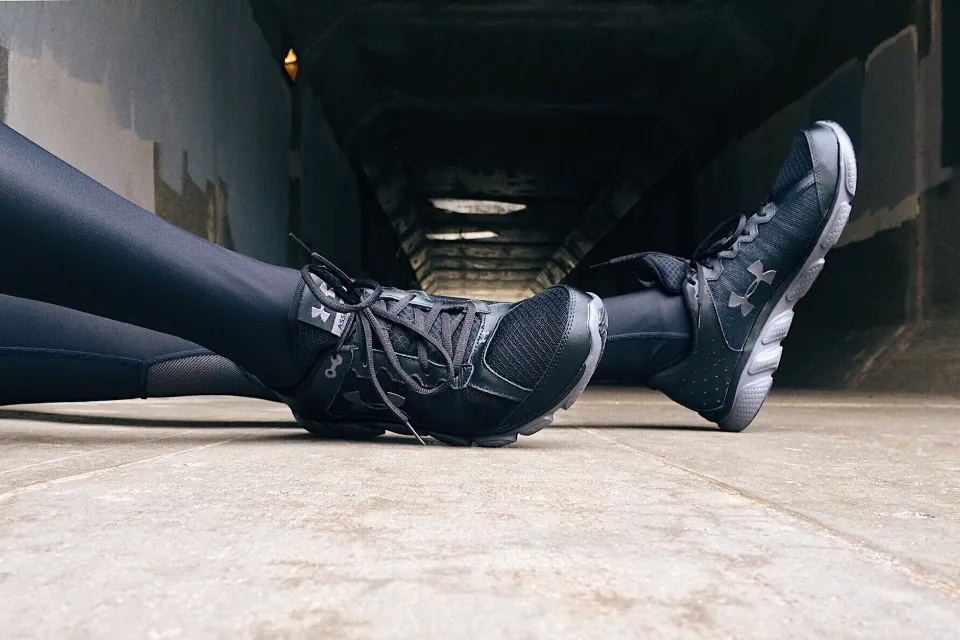
- Purchase shoes from a specialty store, if possible. The staff will offer helpful advice on the kind of shoe required for your sport and assist with proper fitting.
- Try on athletic shoes after a workout or run and at the end of the day when your feet are at their largest. Your largest foot should be the size of the shoes.
- Wear the same type of sock that you would wear for that sport.
- Re-lace the shoes. As you create a crisscross pattern on the top of the shoe, you should start at the furthest eyelets and use even pressure.
- Check the fit. You should have a complete range of motion in your toes when the shoe is on your foot. The distance between your longest toe and the end of the shoe’s toe box should be at least one thumb. As soon as you try the shoes on, they ought to be at ease. Don’t plan on them fitting better after “breaking them in.”
- Walk or run a few steps in the shoes and make sure they are comfortable.
- Check the heel. When you walk or run, your heel shouldn’t slip out from under the grip of the shoe.
- Consider a sport-specific shoe. If you play a sport three or more times per week, you might need to do this.
- Change shoes regularly. The cushioning in a shoe typically wears out after 300-500 miles of running or 300 hours of exercise, at which point it is time to buy new shoes.
What Type of Trainer Do I Need?
Different exercises call for different shoe features. Here’s an overview of the key features to look for in the main gym workout types:
Cross-Training
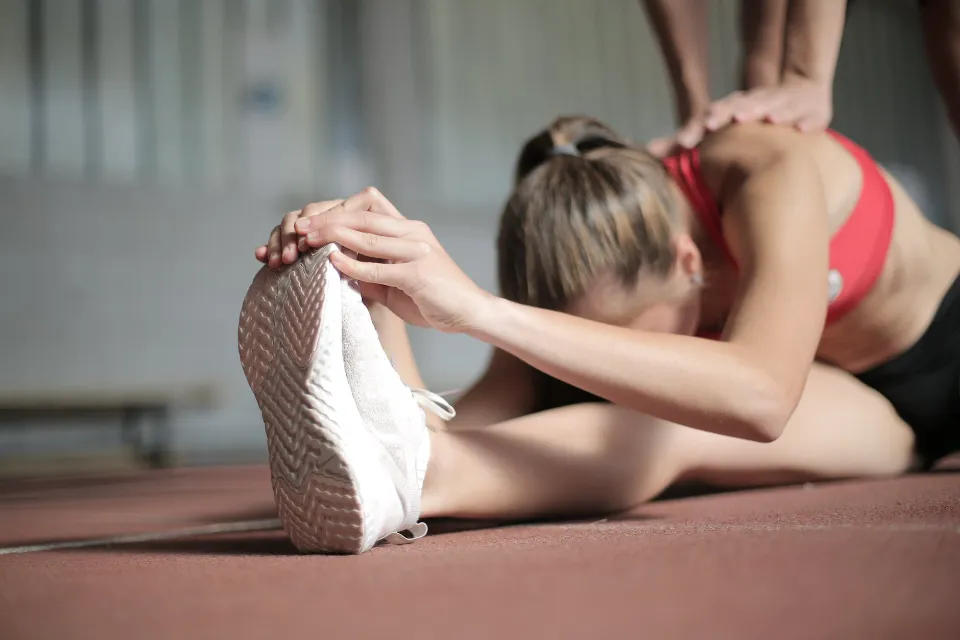
Cross-training typically consists of a mix of exercises that focus on various facets of physical fitness, including strength, flexibility, balance, and cardiovascular endurance. When buying a cross-training shoe, consider the following factors:
- Support: Cross-training shoes should give the feet enough support, especially when performing high-impact exercises like running or jumping. Search for footwear with a strong upper, a secure midsole, and strong arch support.
- Cross-training shoes should have enough cushioning to protect the feet and lower legs from impact during exercise. A padded insole and a cushioned midsole are things to look for in shoes.
- Cross-training shoes ought to offer good traction on a range of surfaces, including indoor gym floors and outdoor terrains like pavement or grass. Look for footwear with a sturdy outsole that offers good traction.
- Cross-training footwear should fit snugly but comfortably, without being either too tight or too loose.
- Breathability is important when choosing cross-training footwear because it will keep your feet dry and cool during vigorous exercise.
- Flexibility: When performing exercises like jumping and lunging, cross-training shoes should be flexible enough to allow your feet to move and bend naturally. Consider purchasing shoes with a responsive midsole and a flexible sole.
- Cross-training shoes need to be strong enough to withstand the demands of a variety of exercises and activities. Look for footwear that is well-made and made of materials that can withstand wear and tear.
High-Intensity Interval Training
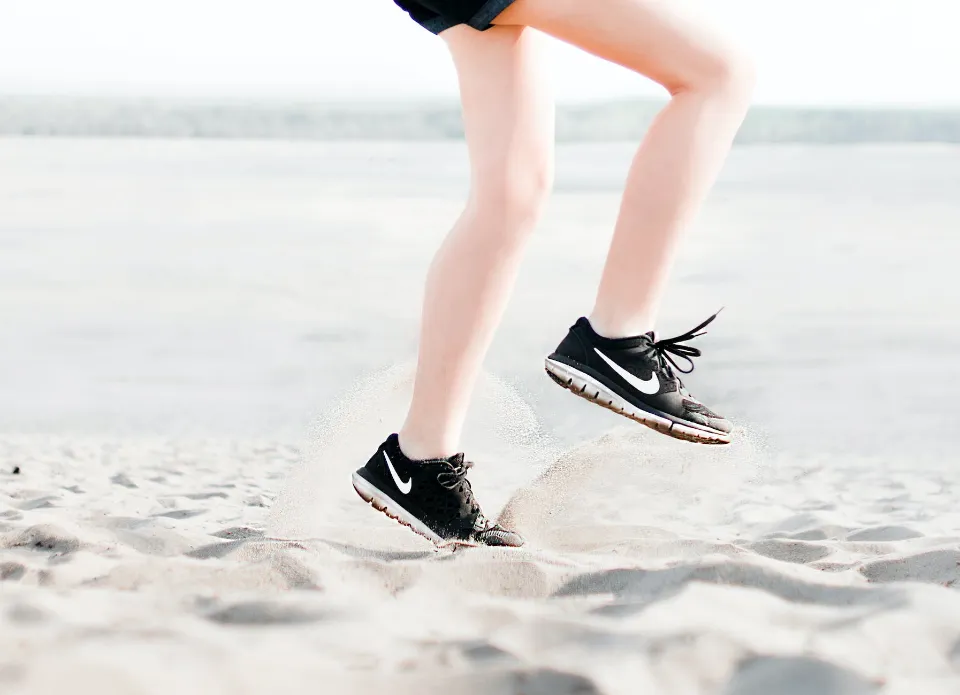
High-Intensity Interval Training (HIIT) entails performing repeated rounds of quick, explosive exercise followed by brief rest intervals.
Here’s what you should take into account when shopping for a HIIT shoe …
- HIIT exercises are high-impact and very stressful on the feet and lower legs. To protect your feet from impact and lower the chance of injury, look for shoes with plenty of cushioning in the midsole and insole.
- Input: HIIT workouts can be brisk and call for a lot of quick movements. To provide stability and assist in preventing injuries, look for shoes with a sturdy upper and good arch support.
- Traction: HIIT workouts frequently consist of a range of exercises, some of which may be carried out on slick surfaces, such as a gym floor. Look for footwear with a sturdy outsole that offers good traction and grip on a variety of surfaces.
- Breathability: To keep your feet dry and cool while working out hard, look for HIIT shoes with a breathable upper.
- Flexibility: HIIT workouts frequently include several exercises, such as jumping and lunging. To allow your feet to move and bend naturally, look for shoes with a flexible sole and a responsive midsole.
- Durability: Because HIIT workouts are so intense, shoes can endure a lot of abuse. Look for footwear with sturdy materials and construction that can withstand the demands of HIIT workouts.
Weight Training
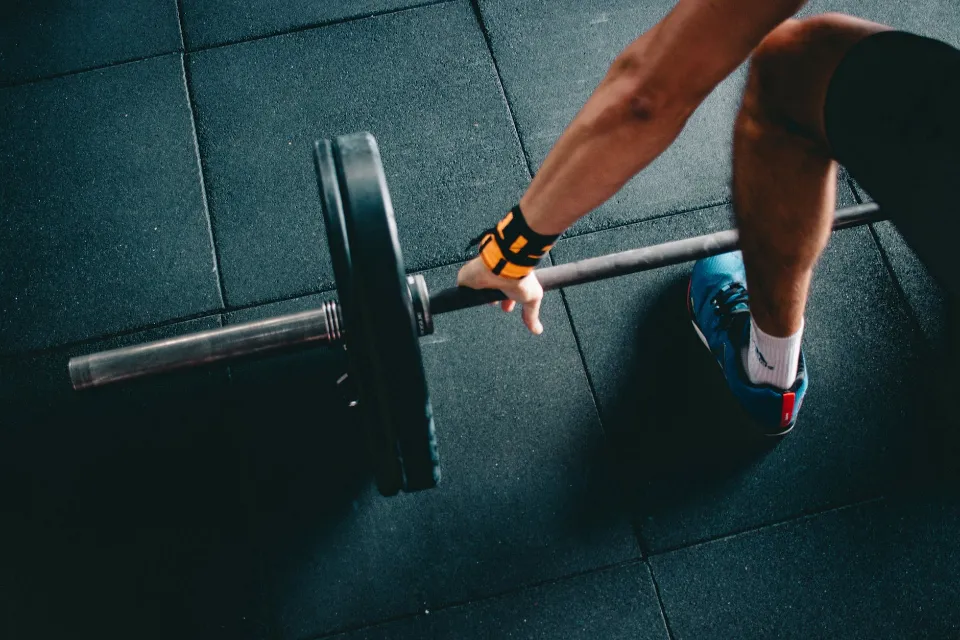
You’ll require a specially made weight training shoe if you plan to spend the majority of your gym time in front of a squat or power rack. Here’s what to look for …
- Stability: Exercises used in weightlifting, like squats and deadlifts, can put a lot of strain on the feet and ankles. To provide stability and aid in injury prevention, look for footwear with a flat, supportive sole and a sturdy upper.
- Exercises for weight training frequently require quick movements, so good traction is crucial. In order to have good traction on the gym floor, look for shoes with a sturdy outsole.
- Cushioning: While weight training shoes should offer stability, they should also have some cushioning to help shield the feet and lower legs from impact during exercises like jumping.
- Fit: Weight training shoes shouldn’t be too tight or too loose; they should be snug but comfortable.
- Breathability: To keep your feet cool and dry during strenuous workouts, look for weight training shoes with a breathable upper.
- Flexibility: Some weight training exercises, like deadlifts, may call for a flexible sole that enables your feet to bend and move naturally. Look for footwear with a responsive midsole and a flexible sole.
- Durability: Workouts involving weights can be demanding on footwear, so look for shoes made of sturdy materials that can withstand the stresses of weight training.
Other Design Features of Workout Shoes
Special features in construction will make athletic shoes more comfortable as well as help prevent injury:
- A slip-lasted shoe is made by sewing together the upper like a moccasin and then gluing it to the sole. A lightweight, flexible shoe without torsional rigidity is produced using this durable technique.
- A board-lasted shoe has the “upper” leather or canvas sewn to a cardboard-like material. In this kind of shoe, a person with pes planus experiences greater support and gains better control.
- A combination-lasted shoe combines the advantages of both other shoes. The back and front are board- and slip-lasted, respectively. While remaining flexible in the front beneath the ball of the foot, these shoes provide good heel control. For a wide range of foot types, they are beneficial.
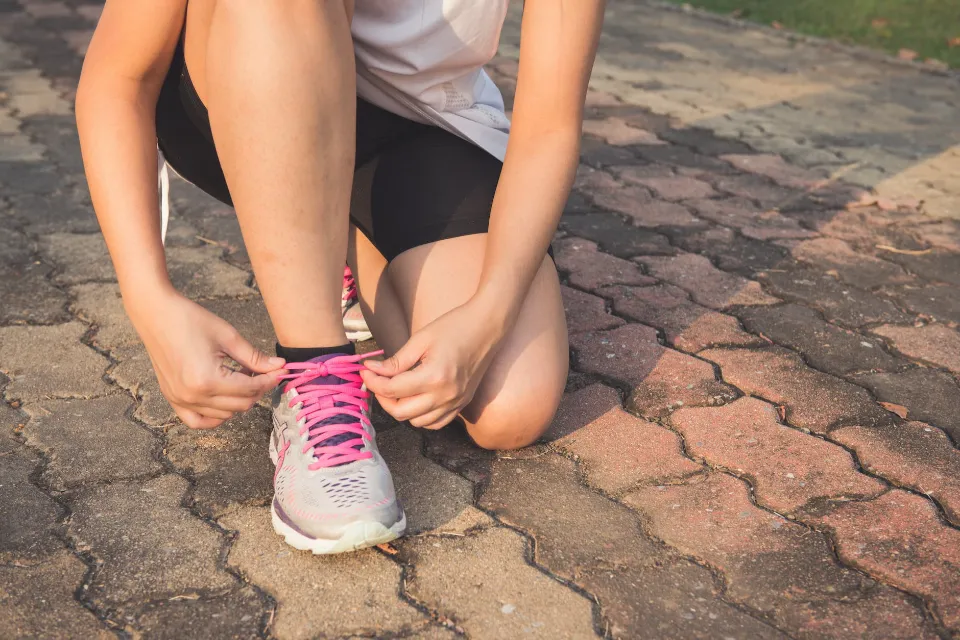
What If I Develop Foot Problems?
Simple shoe adjustments may help to relieve symptoms if you start to experience foot or ankle issues. Many of these devices can be purchased over the counter.
- A heel cup provides an effective way to alleviate pain beneath the heel (such as plantar fasciitis). The heel cup, which can be made of plastic or rubber, is intended to support the area around the heel while relieving pressure on the sore spot.
- A metatarsal pad can help relieve pain beneath the ball of the big toe (sesamoiditis) or beneath the ball of the other toes (metatarsalgia). The pad has adhesive on its flat side and is made of stiff rubber or felt. The pad, which is fixed to the insole behind the tender region (either farther from the toes or closer to the heel), distributes pressure that would otherwise be applied to the ball of the foot. This releases the pressure exerted on the tender area.
- An arch support (orthosis) can help treat pain in the arch of the foot. Arch supports, which come in a variety of materials, can be inserted into a shoe after the insole (the removable inner sole) that comes with the shoe has been removed.
- Custom arch supports may be necessary for chronic (long-term) and complicated problems, including severe flat foot, high arches, shin splints, Turf toe, and Achilles tendinitis. Custom arch supports are specially made inserts that provide support to other areas while concentrating relief on a specific area.
The Bottom Line: Pick Workout Shoes
If you work out in the proper footwear, it will be much easier, safer, and more comfortable. You have options when looking for a new pair of sneakers or a set of wheels!
Before you sort through the numerous brands, models, styles, and fits, consider what kind of activity you will be doing in your shoes the majority of the time. There is no one-size-fits-all solution in the world of health and fitness, and in this case, how you feel and how it fits is the most crucial factor to take into account.
FAQs
What is the Shoes Rule in Gym?
Gym shoes (weight training/ lifting shoes) are usually meant to be worn in the gym only due to their flat and tough sole. Outside of the gym, they may cause early shoe damage and discomfort for the wearer. Running shoes for the heart doesn’t have this limitation.
What is the Difference Between Training and Gym Shoes?
Running shoes with higher heel drops give runners who exercise on tracks and other runs more support and cushioning. Conversely, training or gym shoes are designed for multi-directional movements, including lateral or side-to-side movements.
